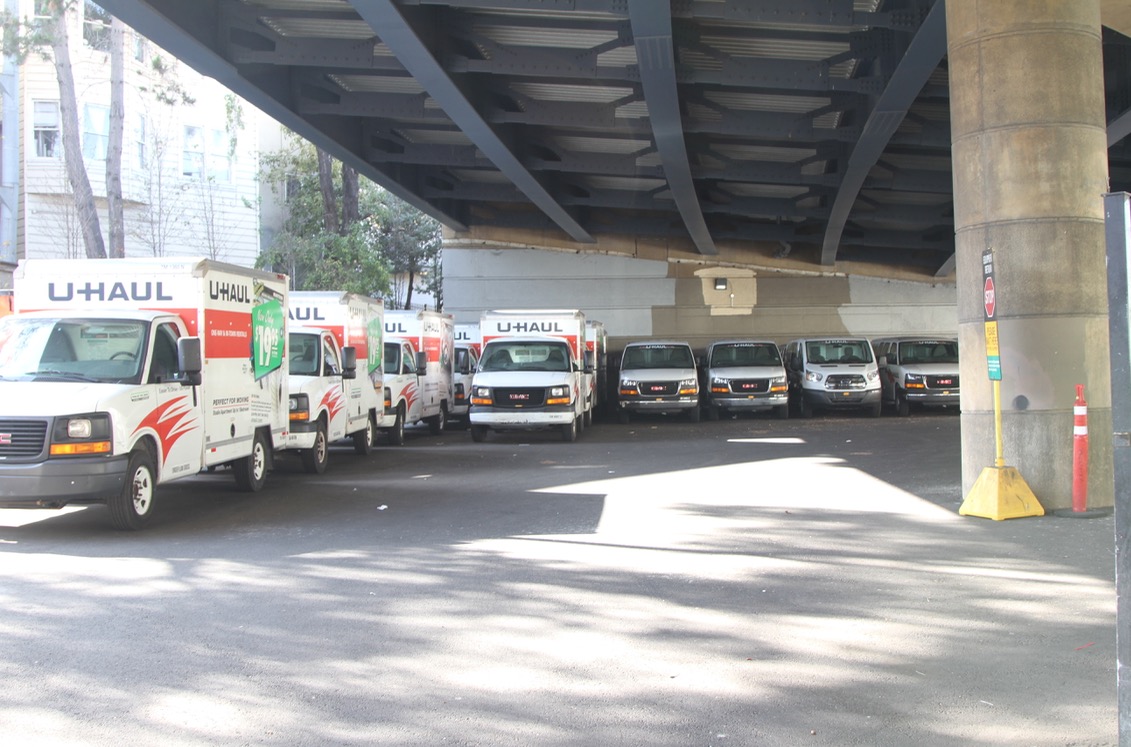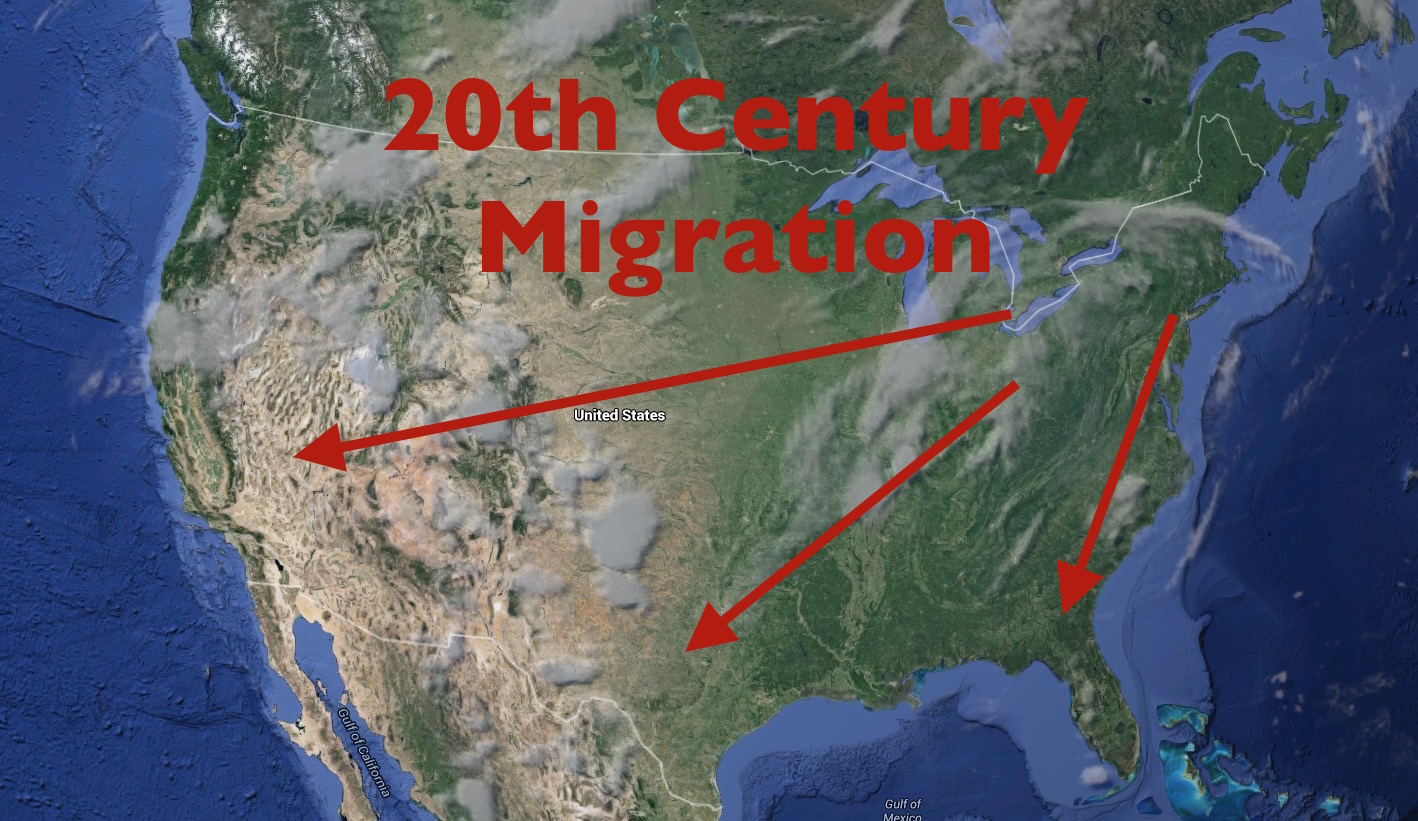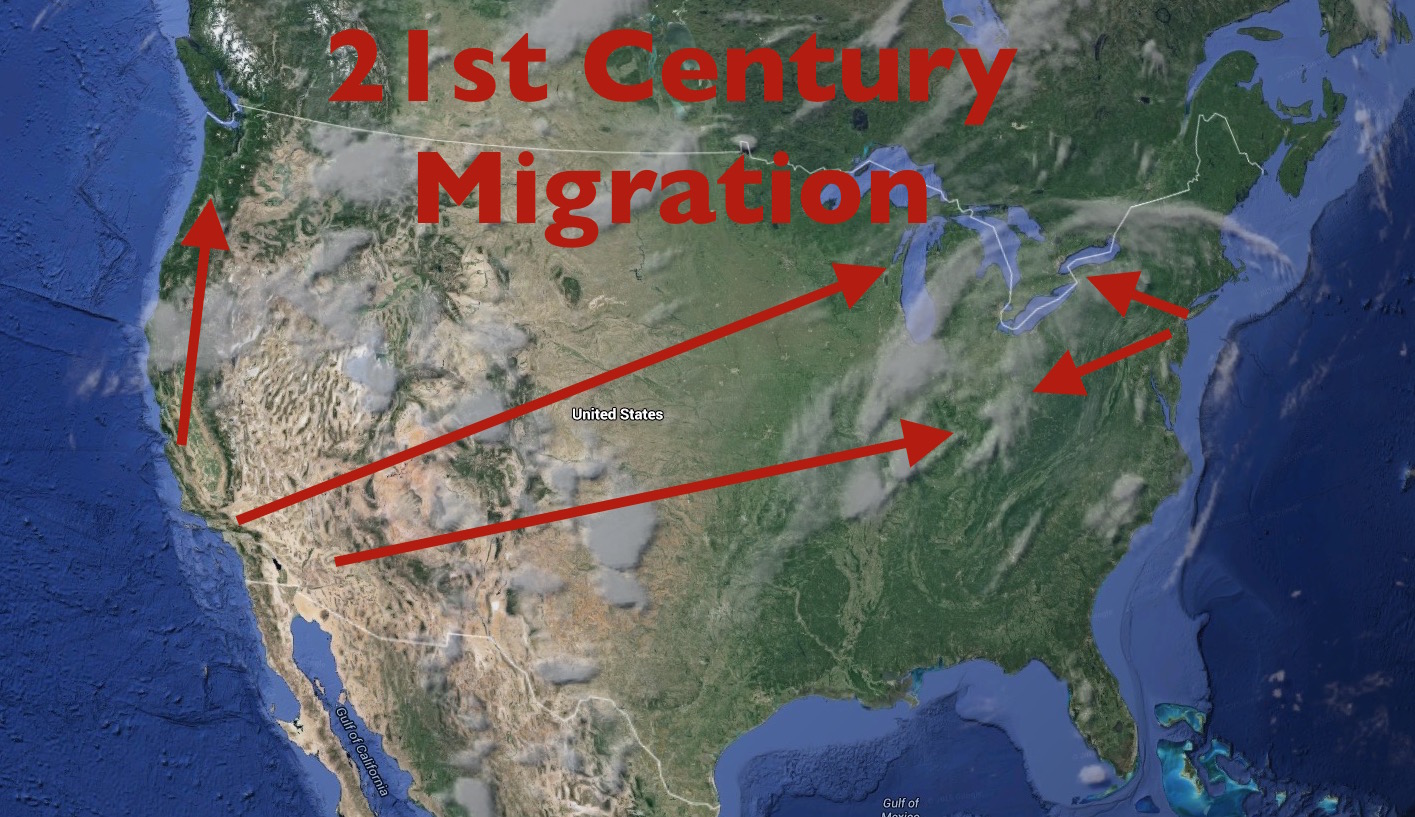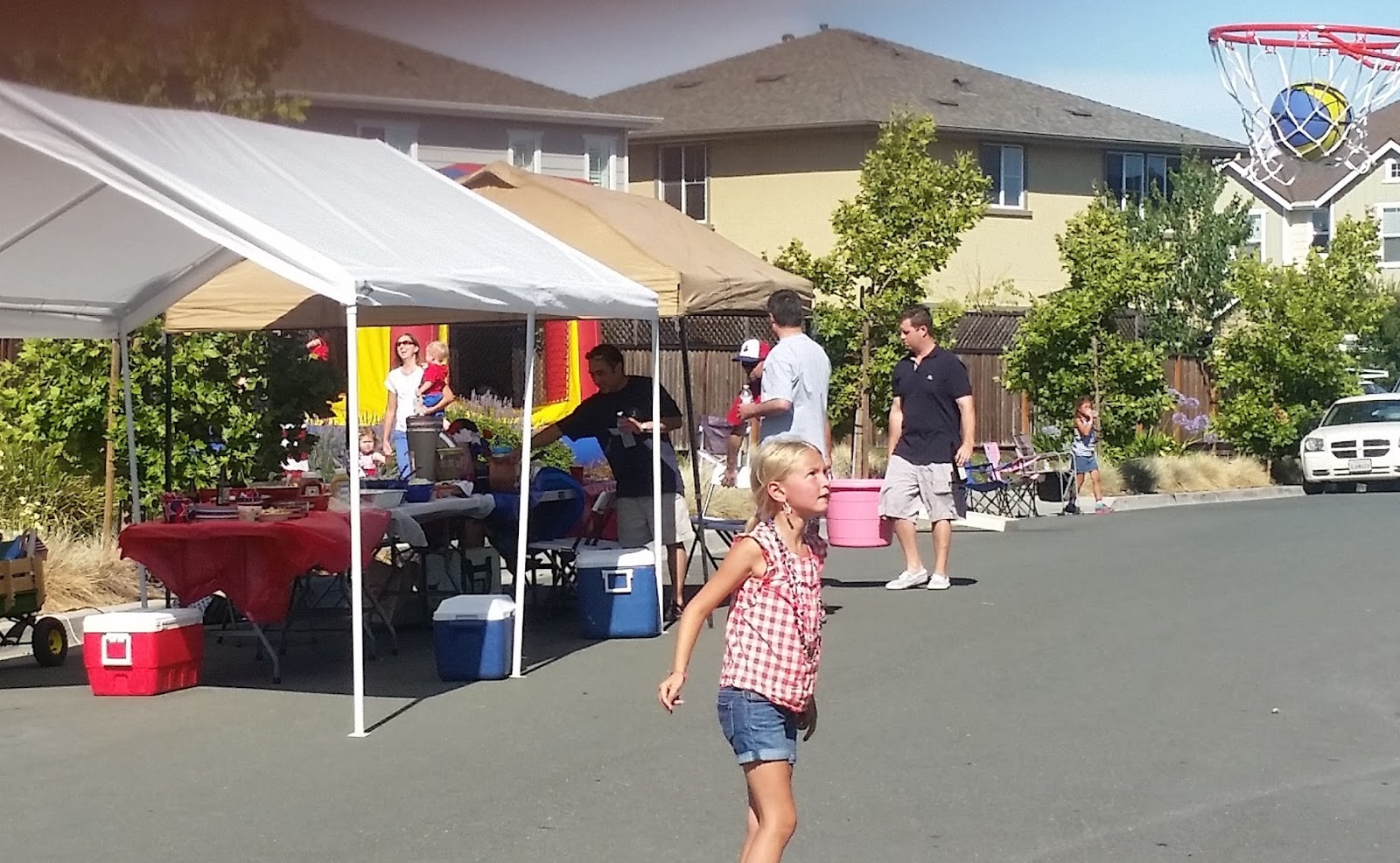Real Value
MEMBER NEWS DIGEST - THE LATEST AND GREATEST FROM OUR MEMBERS' BLOGS
Strong Towns member blogs have produced a lot of great content over the last couple weeks, and as usual I'll spotlight some of it here and try to identify a common thread or two among these posts. One such common thread is that when it comes to assessing value—of a piece of property, a neighborhood, a public amenity—we may often get it right, but sometimes we get it way wrong.
This is especially true when conventional wisdom consists of bad assumptions, as is the case for North America's debt-fueled, auto-centric development patterns—the suburban experiment. For decades, in far too many places, we've not just gotten it wrong, we've gotten it consistently, systematically wrong. We misjudge value, and we may neglect the truly valuable and productive places right under our noses. The costs of this experiment—fiscal, social, environmental, and arguably even spiritual—are becoming clearer than ever.
At Rational Urbanism, Steven Shultis argues for the value of "bad" neighborhoods, in a partial counterpoint to Richard Florida's well-known "Creative Class" thesis (that cities can benefit from investing in certain features which are attractive to well-paid young professionals in knowledge industries).
I was intrigued by the title of Mr. Florida’s latest essay: “How Much Are You Willing to Pay to Live in America’s Best Neighborhoods…. My natural contrarianism couldn’t help but pose a divergent question: “How much are you ‘willing’ to save to live in America’s ‘worst’ neighborhoods”? ‘Willing’ and ‘worst’ are in quotes of course…. the case I am making is that a recently acquired cultural bias has caused society to sometimes… define much of what is actually “best” as “worst”.
Many of the trappings of superficially "nice" places, says Shultis, are "the cultural equivalent of peacock feathers and fruit fly dances"—considered attractive because of a (possibly ephemeral) popular consensus and not because they confer real advantages upon the place or its residents. Meanwhile, what of Shultis's "bad" neighborhood?
And how awful must this neighborhood be for it to cost so little to live here? How few amenities must there be? How enormous the cultural desert? How bleak the landscape?
According to walkscore.com all of this is within a 20 minute walk (the default) of my home:
The Springfield Armory National Historic Site
All of the bars, restaurants of the BID
The Springfield Central Library
Riverfront Park
You get the idea…the list could go on…and on and on.
Just as the value or desirability of a place to its residents might be drastically misread, so too do our municipal governments often drastically misunderstand which land uses and types of infrastructure are of most value to them, with ballooning liability (some of it implicit and hard to quantify) for destructive "investments" as the result. Johnny Sanphillippo at Granola Shotgun, in this vein, examines the cost of an ill-conceived urban freeway, the Central Freeway in San Francisco. It cuts through a swath of land near downtown that used to have a traditional street grid and now looks like this:
The whole point of building this elevated highway was to bring auto-oriented mobility and prosperity to the city. So what exactly do you think this freeway did to the value of nearby property? What became the “highest and best use” of the land under and around it?
San Francisco, lacking the political will to tear the whole thing down, has found creative ways to salvage some of that wasted land: skate parks and food-truck plazas are two ideal under-the-overpass land uses. Both embody a freewheeling spirit and work well in neglected areas where neighbors won't complain of any nuisance. But the post then offers us a cautionary tale:
The city transformed the old cul-de-sac on McCoppin into a high quality park with palm trees, stylish benches, and all manner of bells and whistles. But it failed immediately.
The thing that made the old food truck plaza work was the activity and crowds. There are enough bars and dance halls in the area that people would gather at all hours looking for food between other activities. It was the mobile food vendors and their customers that cleaned up McCoppin. I believe the intention of the original design was to allow the trucks to return and park on the ramps on either side of the terraced steps. But somewhere along the line what the experts anticipated and what actually works in real life were radically different. The trucks didn’t return. Neither did the people.
The value of public parks and plazas doesn't come from the intended, on-paper-somewhere, use. It comes from the users.
One of the reasons we love Granola Shotgun is that Johnny does an incredible job of combining macro and micro perspectives in his analysis of urban issues. The aforementioned Central Freeway post was followed up with this utterly-big-picture take on how we misjudge value at a regional and national scale:
History is cyclical, not linear. Most people don’t truly understand that. It’s especially true in real estate. If you base the purchase of a home or investment property on what’s been desirable for the past thirty or forty years you may be unpleasantly surprised at the results moving forward. On the other hand, if you grasp the longer demographic and economic cycles you can take advantage of the ebbs and flows that are evident from the historical record.
Johnny makes the case that the "Rust Belt" Midwest, the epicenter of decline and outmigration in the late 20th century, is due for a resurgence as its innate advantages reassert themselves, while the South and Southwest are vulnerable to water and fuel scarcity and the runaway costs of unsustainable sprawl.
The entire Midwest has emptied out. The population fell by half in the last few generations. High quality real estate is currently on offer at fire sale prices. Every bad thing that could possibly happen to a place has already occurred and the region is ripe for reinvention. There’s just enough residual knowledge and equipment left behind that fine grained local productive industry and agriculture can take root again. We won’t be seeing the Detroit or Cleveland of 1950 ever again. That era of massive auto plants and steel mills is over. But these places have the qualities that will be in demand in coming decades. At least that’s my best guess at which way the pendulum will be swinging.
Of course, real value to a community doesn't always translate to property tax revenue. On Patrick Kennedy's StreetSmart blog at D Magazine, guest blogger Dallas May offers some thoughts on the relationship of cities to religion as well as to churches and communities of faith. The neighborhood church, says May, is an essential element of an inviting urban place.
Churches (at least in principle) offer a unique niche in a community. Churches really serve as the only institution where everyone is welcome….
That’s why Churches are vital to strong communities. They bring us together in ways that no other institutions can. I have heard the argument that “The Cowboys are my Church.” After throwing up a little in my mouth, my response to that is: “What will the Cowboys do for you when you lose your job? Will they still let you in to see the game?” Probably not. Churches are there in the communities when you need them and they are there in the communities needing you.
This piece, I believe, is ultimately the missing key for why suburban “walkable” developments feel fake. Legacy Town Center in Plano is really a neat development in a lot of ways. But it will always feel contrived to me. It’s a great place to “Live Work and Play” -so long as your credit card is accepted.
Legacy is a development that has fabulous commercial success, and horrendously fails at community building. The problem is that once a member of the community can’t pay to play, the community rejects the person. That’s not community at all.
Legacy Town Center, Plano, TX
Here is my critique:
• If grandma has to drive several miles to go to church on Sunday morning, you failed at city building.
• If a person in pain has to do a Google Maps search to find a minister to talk to them, you failed at city building.
• If you don’t include space for the pieces of communities that bring people from different walks of life together, you failed at city building.
Although our members span the full political spectrum as well as the religious (and non-religious) one, Strong Towns does engage with ideas—such as the centrality of community, or the relationship of urban form and transportation policy to social justice—to which various faith traditions have something to offer. More than a couple of our members have thought-provokingly reflected in writing on these connections. One of them is Bruce Nesmith in Cedar Rapids. At his blog Holy Mountain, Bruce offers his take on the Pope's recent environmentally-themed encyclical, Laudato si. Grounded in a focus on human dignity, community, and our moral obligations to our neighbor, the encyclical offers some take-home points for urbanists, says Nesmith:
With regard to urban life, the Pope seems ambivalent. Writing about cities, he often accentuates the negative:
"Nowadays, for example, we are conscious of the disproportionate and unruly growth of many cities, which have become unhealthy to live in, not only because of pollution caused by toxic emissions but also as a result of urban chaos, poor transportation, and visual pollution and noise. Many cities are huge, inefficient structures, excessively wasteful of energy and water. Neighbourhoods, even those recently built, are congested, chaotic and lacking in sufficient green space. We were not meant to be inundated by cement, asphalt, glass and metal, and deprived of physical contact with nature. (44)"
On the other hand, he advocates design that aims at "people’s quality of life, their adaptation to the environment, encounter and mutual assistance. Here too, we see how important it is that urban planning always take into consideration the views of those who will live in these areas" (150). He calls for preservation of familiar landmarks as well as connections between different parts of the city (151). Public transportation needs to take priority over car-centered development: Many cars, used by one or more people, circulate in cities, causing traffic congestion, raising the level of pollution, and consuming enormous quantities of non-renewable energy. This makes it necessary to build more roads and parking areas which spoil the urban landscape (153). Urbanists would argue that if we heed #150-153 we can overcome the problems in #44.
Dave Alden at North Bay Design Kit argues that Petaluma, California needs to do more to encourage block parties. The city's policy makes it very difficult to legally close a residential street for one. Officials often turn a blind eye to enforcement of this section of the code, but party organizers still face red tape which serves no constructive purpose.
A block party is a simple way for residents of a neighborhood to add real value to the place—fostering community, and getting the neighbors out to experience the street from a perspective other than the inside of a car. There are many similar examples of civic activities that should be easy, but in an "orderly but dumb" over-regulated system are often disappointingly hard.
Alden has been on a roll lately, also offering some great posts on the politics and practice of civic activism. In Checking for Support on the Flanks he discusses the dilemma any activist with limited time and energy knows well: when to pursue an idea, versus when to float it publicly and let someone else take the ball and run with it. And in Joan Rivers May Be Dead, But Can We Talk? , he makes the case that it's necessary to know how to, and be unafraid to, have conversations about political, possibly contentious issues. This is definitely true in the realm of urban design. If we don't raise these issues and try to spread appreciation of their importance, the status quo wins by default:
You may ask why this should matter to urbanism. The answer is that if we don’t talk about things, the status quo remains the status quo. If we don’t educate children about the comparative beliefs of different religions, they tend to adopt the same religion as their parents. If we don’t explain the differing political philosophies, our children tend to follow in their parents political footprints. And if we don’t talk about the pros and cons of different land-use approaches, then we tend to keep building drivable suburbia.
A quick congratulations to avid Strong Towns supporter (who helps share Member News Digest duties with me) Jesse Bailey at Walkable West Palm Beach, who has some good news:
We recently received an email from new FDOT District 4 Secretary Gerry O’Reilly, in followup to our requests for a better, safer design on the Flagler Bridge reconstruction.
[The email describes] a very substantial improvement in bike facilities compared to the prior design, which was essentially a bike lane that shared space in the shoulder, as we wrote about in a prior blog piece titled “Why Johnny still won’t be able to ride to the beach”. This new design narrows the travel lanes from twelve feet to eleven feet, provides a striped buffer, and a generous bike lane of 6 feet wide.
Is this the ideal outcome? No. We had hoped for a protected bike lane, with a physical barrier between cars and bicyclists….
Nonetheless, as this design was already well under way and FDOT showed a willingness to take our concerns seriously for better bike facilities, Mr. O’Reilly and staff are to be commended for hearing the community’s voice.
The bridge in May 2015. (Source: Google)
Don't doubt that Strong Citizens can make a difference! Getting involved in the politics of land use and transportation in your community may seem daunting, but you may be surprised: fewer people take the initiative to be heard than you would think, and your voice has more power than you would think.
To wrap up for this week, here's a quote from Dallas May's previously linked post at D Magazine, "God is Found in the City." While I am not personally religious, this struck a chord with me—I think it's a beautiful statement of the remarkable achievement and the ongoing promise that cities, as a form of human community, really represent:
For all our evolution, cities filled with humans should be the terrible and frightening places that we are told they are. They should be places of corruption, violence, and constant competition. And you can find plenty of that. But yet we find that the Bible tends to point back towards cities. The letters of Paul are not addressed to “the Church in the mountains somewhere” or “the Church in the new sub-division with the good schools”, they are addressed to Rome, Corinth, and Ephesus….
God is found in the city because he is found in the people of the city who bare his image. Hundreds of thousands of people who, each day, make small choices that–against cold logic, rationality, and evolution–do good and loving things for the sake of their community and their city. God is found in the city.
You can check out the entire member blogroll on the Strong Towns member site. If you're a member with a blog and would like your work to show up there, please let us know about it.










